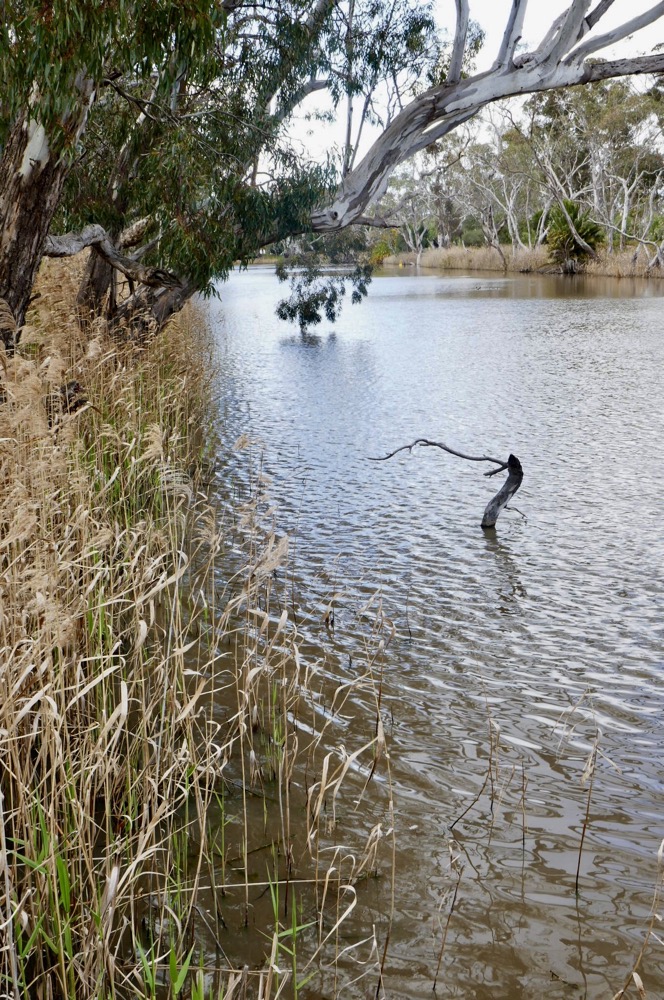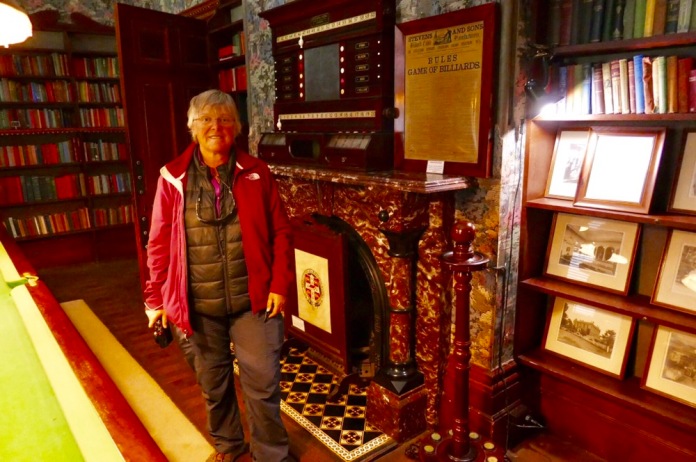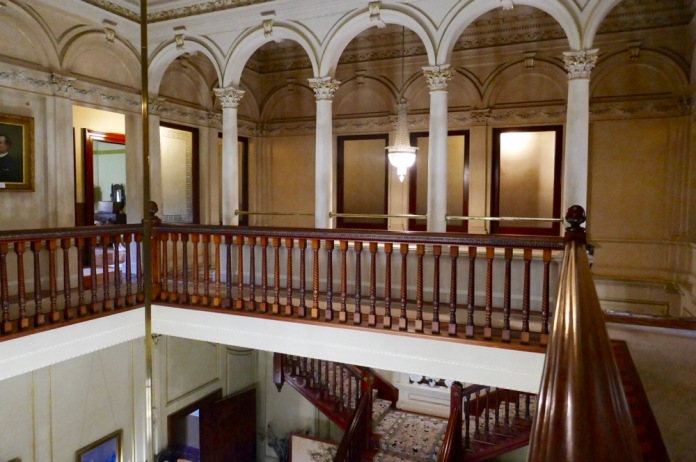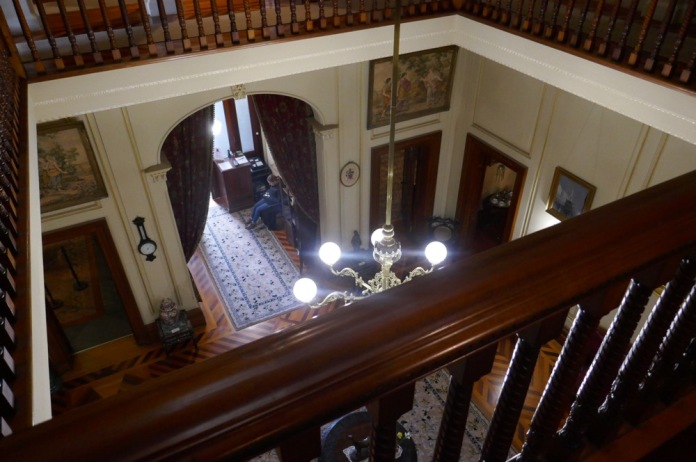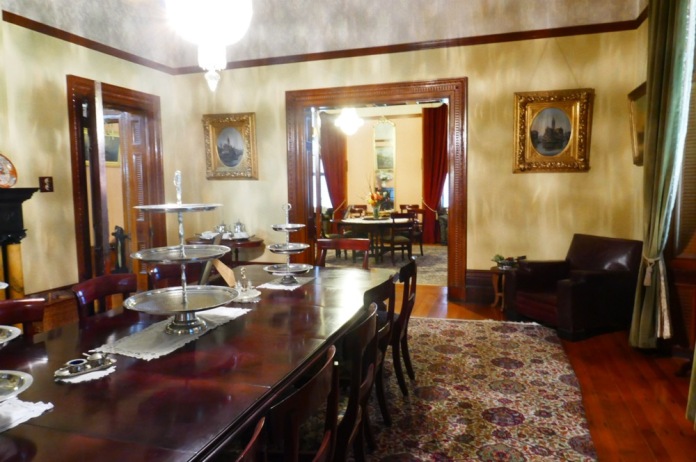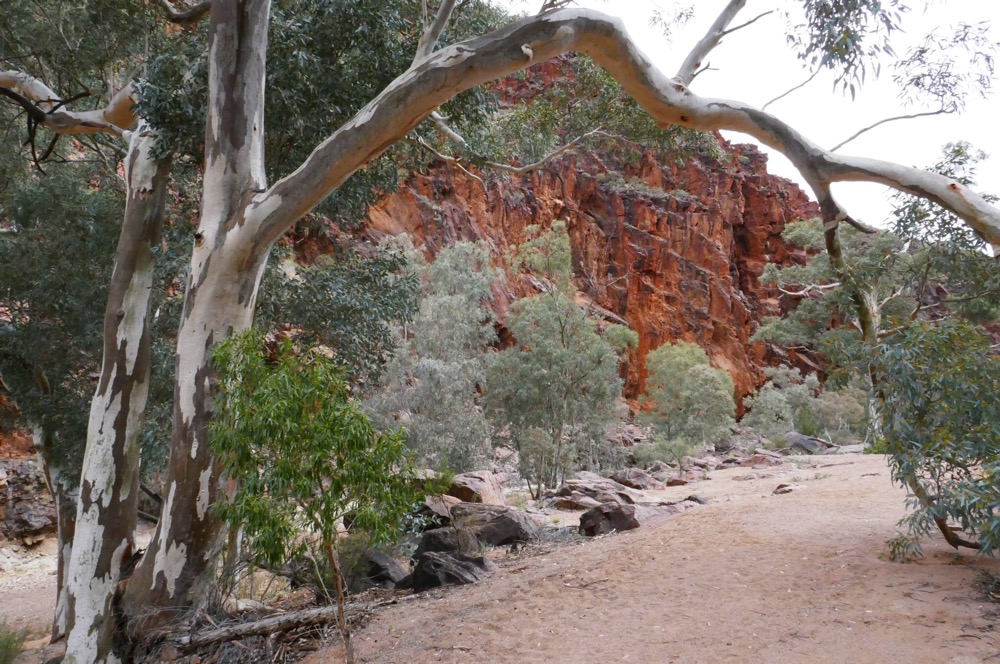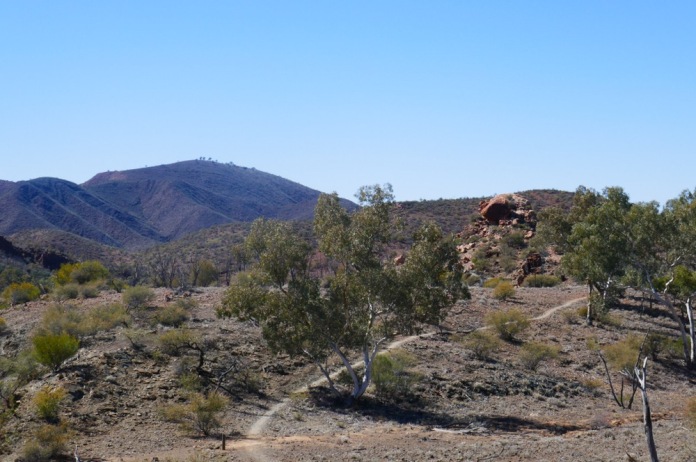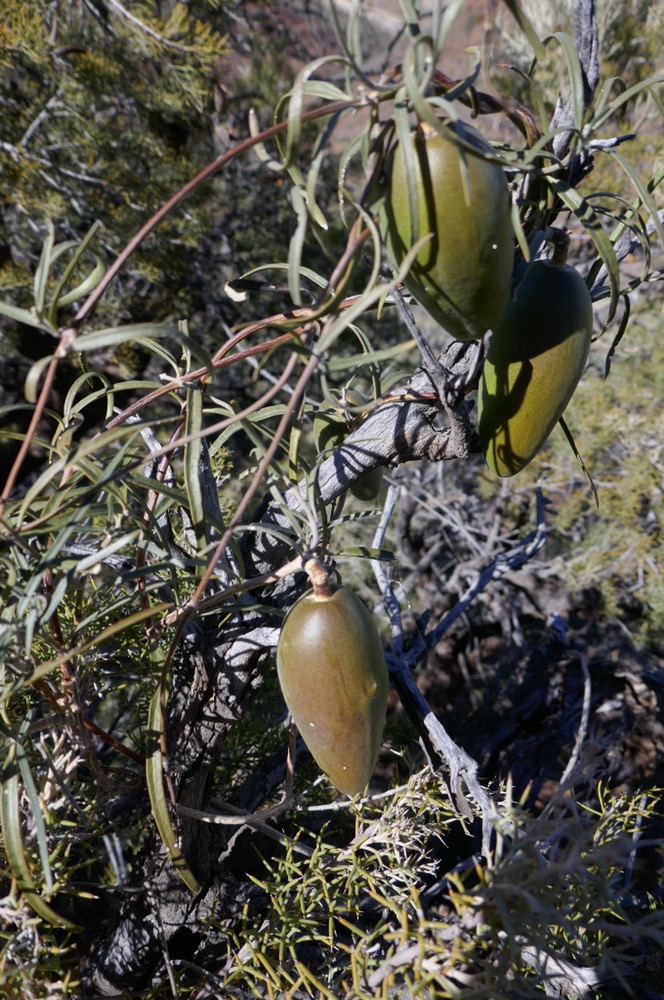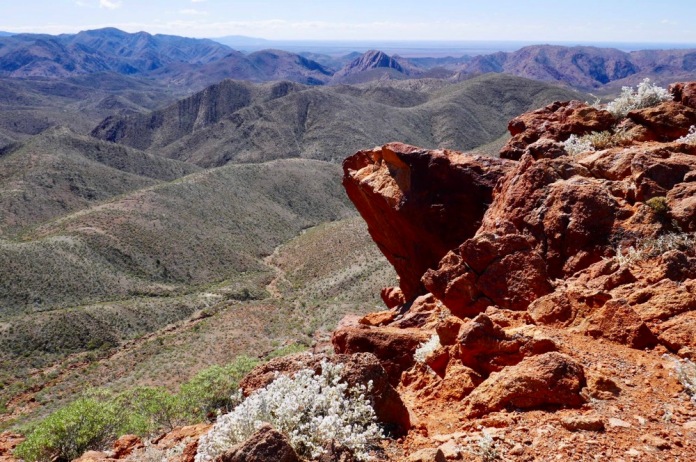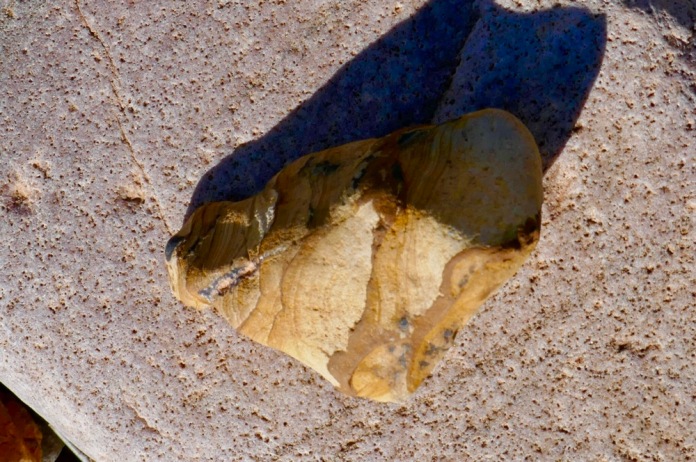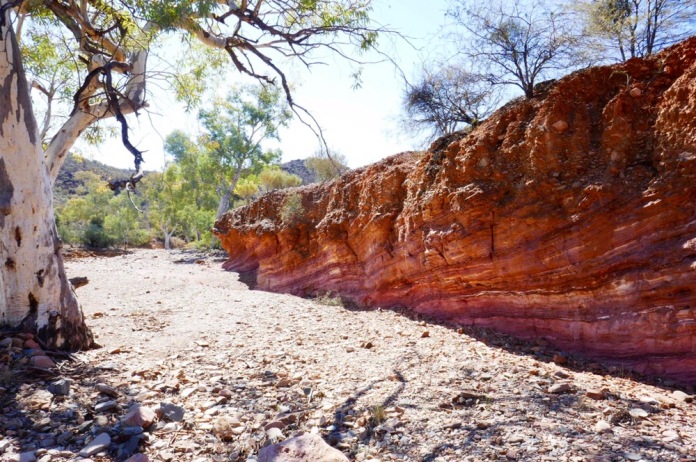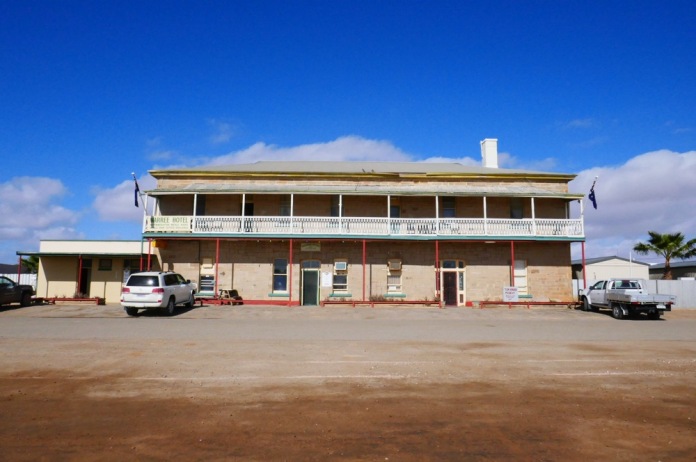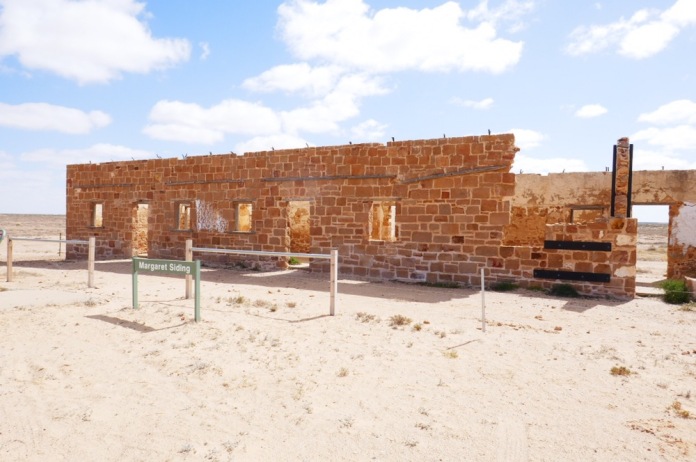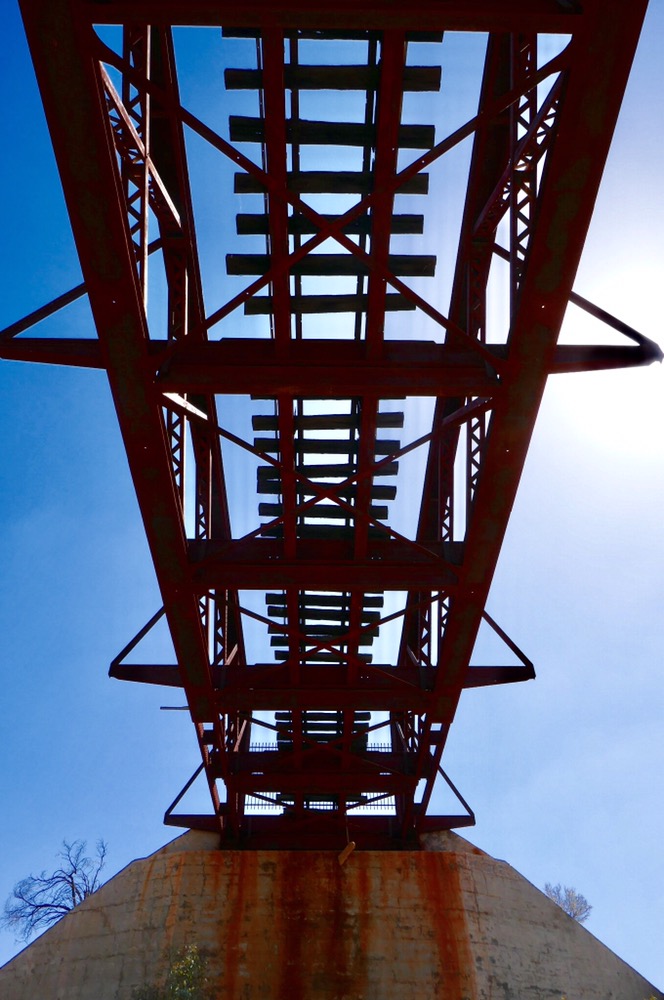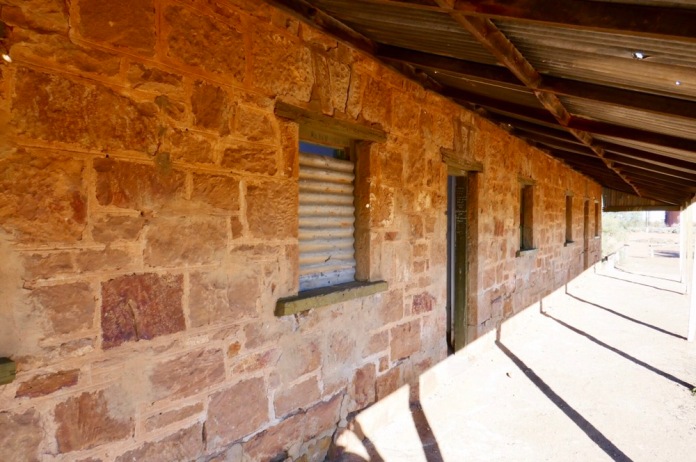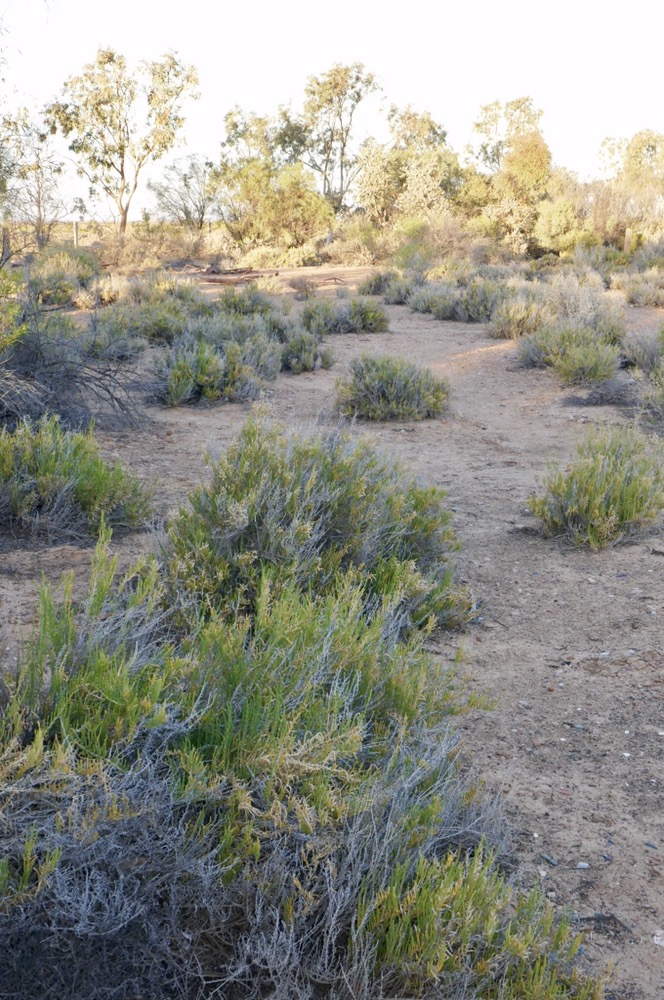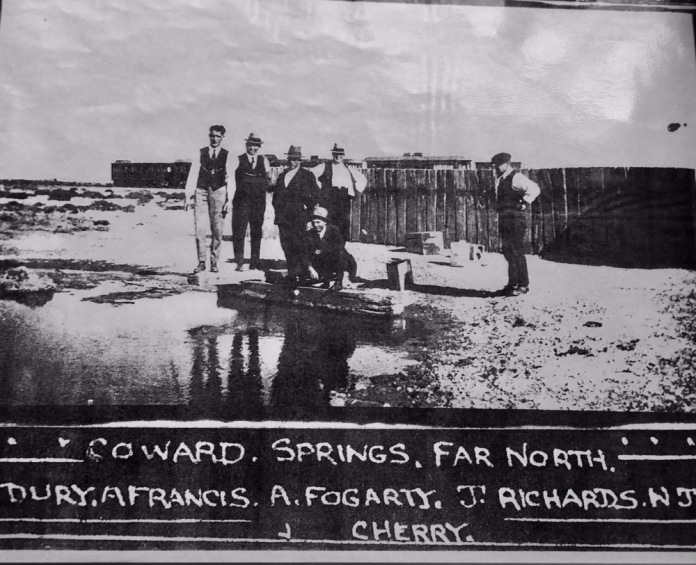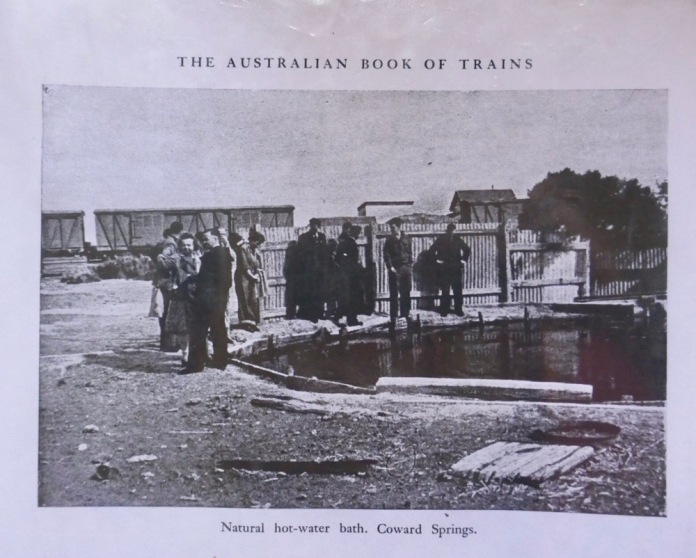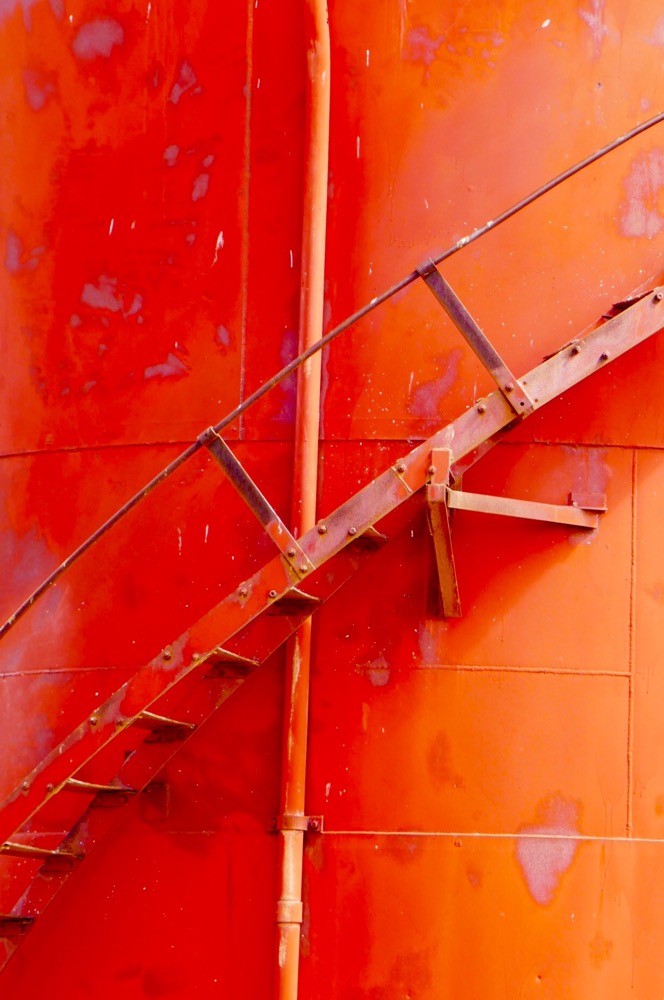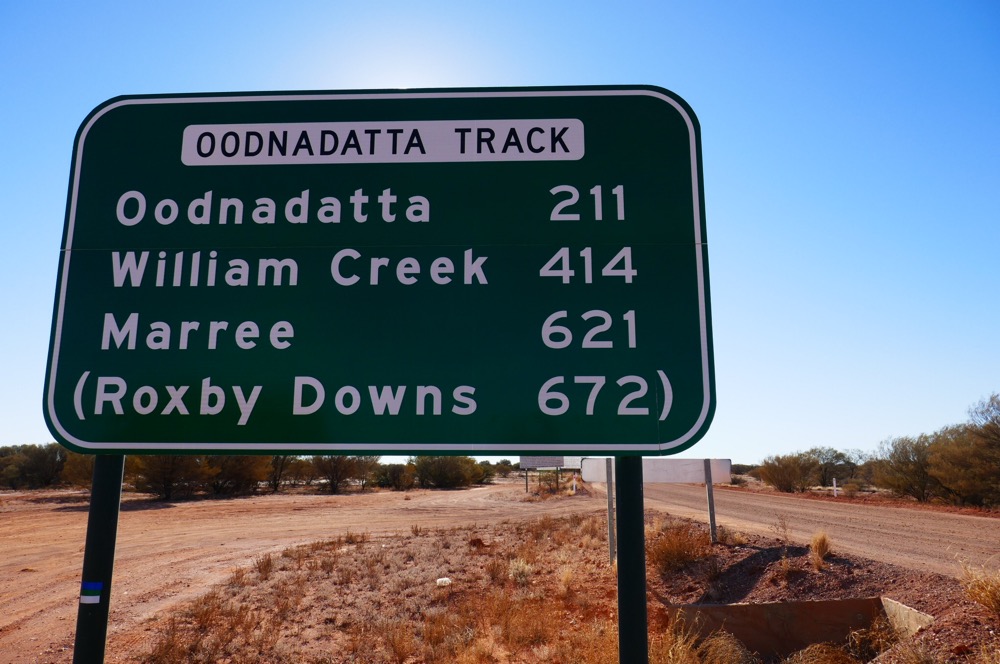
Emu bush

Tellite Gorge




Stubbs Waterhole

Here we are in Arkaroola. Arkaroola is private wilderness sanctuary to the north and immediately abutting the Gammon ranges national park. It’s dry and hot in Summer but this time of the year, well, it’s still dry but it’s not hot. Overnight, it’s cold and over the day it gets to the high twenties. It’s perfect walking weather. Sunny, warm enough and usually a breeze to keep the flies from finding us.
Arkaroola was a pastoral lease for many years until it was bought by Reg Sprigg, a geologist and academic, in the 1960s as a sanctuary for rocks, plants and animals. It’s the northern extreme of the Flinders Ranges. From any high point, there are Ranges of abrupt hills as far as the the eyes can see to both the north and south.
We are camped in a powered site, not far from the shower and amenities block. Around us are tall hills, bright orange in dawn or afternoon light, acacias snarled up the steep slopes. On this our first night, a full moon came up between two hills making an arresting sight.
We are staying here five days. On our first day, after breakfast, we got a lift from the sanctuary owners to the start of the Acacia Ridge walk. It begins about five kilometres along the road. We were joined by an older couple, Michael and Rosemary on the walk. As we took loads of photographs, they left us for dead, but waited for us every five hundred of so meters along the track. The track goes steadily upwards and provides some terrific views of Old Arkaroola station and it’s surrounding hills. At the top there is a branch to the summit, wow, there are some great views north. It is some very impressive scenery. On the way, we saw different types of flowers and shrubs including fox tails, red hops, dead finish, bush tomatoes and Sturt’s nightshade, a tall plant with blue flowers rather than the purple bush tomato flowers. We saw bush pears, big and green but not for eating yet.
From the summit, the track winds past a huge steep rock face and then drops quickly on a slippery surface. We grappled our way down till we reached the road, then only a short distance from the village. By now it was getting warm, so we relaxed over the afternoon beginning with lunch of ham-cheese toasties at the cafe. We later returned in the evening for dinner. It’s a very good restaurant. Afterwards we walked along the gravel, stony road up to the campsite.
The next morning, we decided to walk the Mawson Spriggina walk. Spriggina is a 15cm flatworm that was one of the denizens of the pre Cambrian seas and oceans. It’s named after Reg Sprigg, it’s discoverer. The walk commences near reception, and heads past the motel style units, then onto the rough Arkaroola countryside. It undulates around hills, and dry creek beds with some wonderful views. We saw some interesting plants including the beautiful Curly Mallee, as well as hakeas and coolabahs. We reached some fascinating volcanic intrusions. These were ancient upwelling of lava that never reached the then surface, but were trapped into the tough sedimentary rock. There is Sitting bull, as well as the Pinnacles. Their orange colouring contrasting with the blue grey of the sedimentary rock remaining. The walk continued back. We met a mum and baby red kangaroo. They were a bit nervous about us but we still took some great photos as they watched us. In the afternoon, Jennifer drove to Bolla Bollana Rockpool. This very pretty Rockpool, is reached by quite a rough Track. The next Waterhole was an even more difficult road trip. After seeing the 4WD AHEAD OF US rocking and dropping, we piked, and turned around only to meet another car on this really narrow bit of road. We nestled the car as far off the road as we could, giving the car a massage with dead finish. Much of the scratching merely removed the caked-on bulldust, but there has been some slight damage. The result is called bush pinstripes.This acacia is tough and spiky. We got back about 4:30 and chilled out over the evening.
Today has been a quieter but still very interesting day. We visited the mining museum with loads of interesting stuff about geology and many examples of rocks and fossils found here in Arkaroola. This was timely to do as Jen and I did a geology field trip over the afternoon. Mark Sprigg drove us out to see several interesting geology features of this area. Arkaroola, like the rest of the flinders ranges is part of an uplift that was created by the ramming of what would come to be the eastern states of Australia with the much more ancient original australian continent. In Arkaroola there are some important faults, we saw one today. It’s movement is frequent but tiny with about 300 microtremors per year. At faults there is weakening of the barrier rock layers usually provide and minerals can come up and penetrate the sedimentary rock. We visited disused copper, and manganese mines. There was also a reasonably successful gold mine. The gold was all near the surface and not in a vein. No one could figure out why until only very recently. The reason is quite amazing. Apparently a particular type of Cyanobacteria eats gold. Then water bubbling up the fault, carries the bacteria including its contained gold up into the upper levels of sediment. This makes Cleopatras talent for drinking pearls look stingy. We visited the ochre wall. Ochre from here would go all over Australia. An endemic mica containing iron was considered very valuable for its glistening red colour as a paint. As Mark drove across a creek, he told us over the car engine noise that two years ago, scientists had been studying the rock formations and fossils here. It’s ancient, about 700 million years which is long before plants and animals but in the Proterozoic. This was the site of an immense coral reef, made up by bacteria and primitive life forms and was larger than our current barrier reef. The atmosphere was much lower in oxygen than today and so these bacteria survived on carbon dioxide and sulphide gases. Impressive stuff. However, the highlight of the day was our visit to Tillite Gorge. It’s a steep, rough road but Mark handled it expertly. Tillite Gorge is named so because the sedimentary rock contains huge rocks. They were dumped from a glacier into a shallow estuary or sea a very long time ago. The larger rock floor of the gorge is scratched by the ice grabbing stones and ripping them along. It must have sounded like four fingernails on a blackboard. Apparently, this actual site was instrumental in discovering Snowball earth. This was 800 million years ago, and describes our whole planet covered in a giant glacier: A giant snowball.
It has been a very interesting afternoon. Jennifer got more tips about 4WDing.
This evening, we had dinner at the restaurant, before walking back here and snuggling up in the camper trailer.
One thing I have learned on the walks here is that in dry, relatively cool weather conditions, thirst is NOT a reliable guide to hydration requirements. When I walked with Di and Dave I had a lot more fluid and electrolytes and felt fine during and well after the walk. Here I drank only to quench thirst and felt fine during the walk but completely awful that evening and the next day. So the point is, keep those fluids up!
It’s Saturday and it’s our last day before departing in earnest to catch the boat. It is still overcast which might put a mozzie on tonight’s astronomy experience. Mm. Any way we gave had a terrific day, doing the final short walk in Arkaroola. It’s called the Bararranna Walk and it’s Highlights are the tellurite lined creek from Tellurite Gorge, and the Bararranna Gorge and Stubbs Waterhole. The track is a circuit beginning from Welcome mine trail head. This was the site of a copper mine so there is lots of malachite and ansurite fragments on the ground. The mines are vertical drops mostly with just a few bits of timber marking them. However unless you were silly enough to go near them, they don’t pose a risk to adults. The track winds westward, its narrow and rocky and eventually comes to a slate and shale field. There are Emu bushes here, it’s a pretty red fuschia flower. It’s on the blog prior to this one.
We dropped down into a creek bed, and went downstream, climbing down the dry waterfalls. Everywhere tellurite rock. This forms beneath melting glaciers as stones and small boulders drop into the sea bed. When this sea bed sand becomes rock, the erratics are still imbedded. We enjoyed our cups of tea nestle don the rocky outcrops. We were on the lookout for rock wallabies but no luck, though we did see some wallaroos.
The track follows the creek to its junction with Arkaroola creek. Here we found Stubbs Waterhole, and it’s very still, very beautiful. Sheer quartzite walls with a green Rockpool. The rivergums all standing mute as sentinels near the banks. There was a small yellow bird drinking water and then flew up to sit in a tree near the Waterhole. Arkaroola creek is also fine walking. The track now requires small and large boulder hopping rather than scrambling. The stones are of so many colours reflecting their many origins. We diverted to visit Bararranna Gorge. There’s a massive ripple rock platform tipped into the vertical. There are masses of blue flowers. There is some water in the rock pool. It is a very peaceful sight. We carried on along the creek and ultimately back to the car. We passed some interesting geology. There was a huge rock that had been scratched by stones moved by a glacier. There was the formation called Humanity seat which is vertical sedimentary rock consisting of quartzite and shale. There is a spot early on in the walk where you see two small hills, these contain evidence of early bacteria that once created the huge coral reef I mentioned earlier.
The walk has been terrific. Though only seven kilometres, we were tired out by the end. We drove back to the restaurant at Arkaroola. The kitchen was closed by now so we had chocolate cake instead.
Right now I’m sitting beside the camper, I’ve had a shower so smell a bit better, and Jennifer has put on the clothes to wash. Arkaroola has been a great place to visit. I can really recommend it for the adventures and beauty it offers to the traveller.
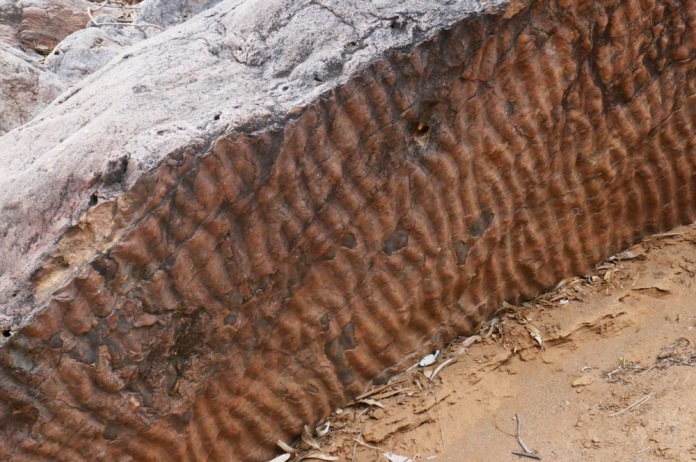
Ripple rock – ancient sea floor


Bararranna Gorge

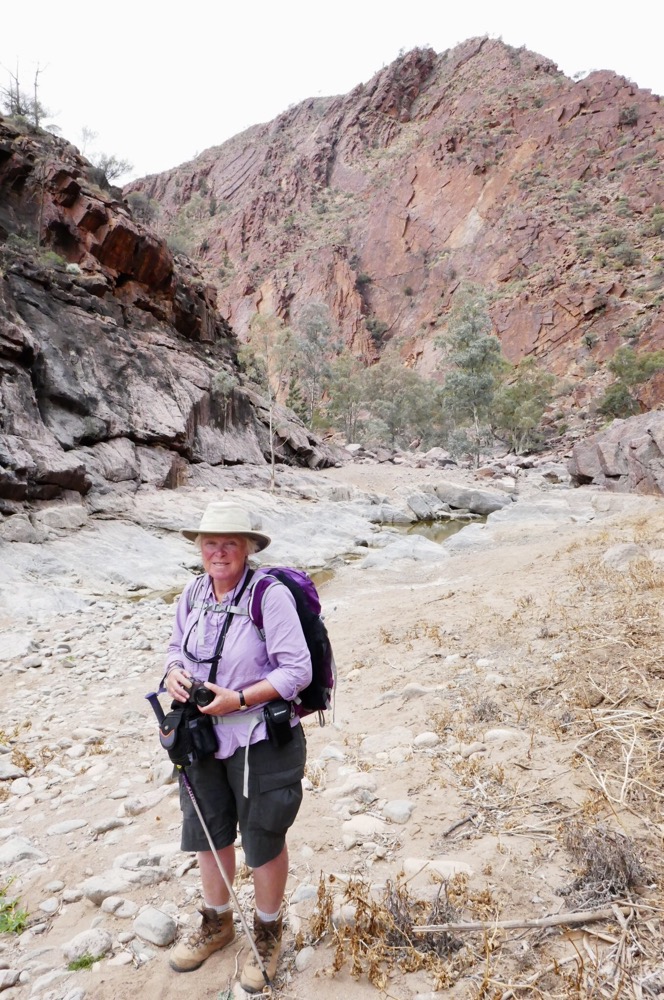


Scratching indicates glaciation – stones imbedded in moving ice scratch the rocks


